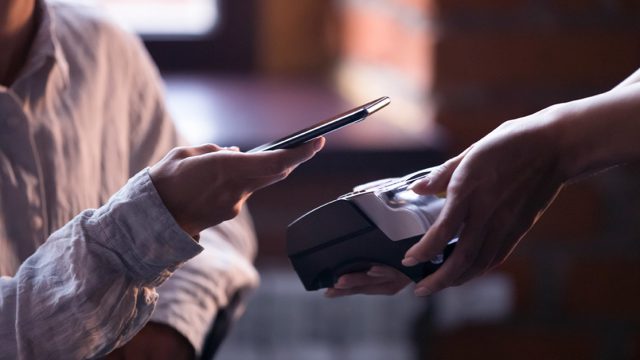Turn the clock back just five years and you would be hard-pressed to find anyone who would believe mobile apps would become a dominant form for payments.
And yet, here we are in 2019, an age where mobile payments are no longer fringe technologies, but increasingly the mainstream.
According to estimates by PayPal division Braintree, more and more people are switching over to digital payment options as global infrastructures develop and networks expand. Braintree’s 2018 Global Payments report finds that since 2017, the number of consumers using a digital wallet have grown by 30% to a staggering 2.1 billion customers.
The gravitation of shoppers and businesses towards mobile payments has bolstered the overall growth of the industry, with some analysts suggesting the global market could achieve a value of US$10 trillion by 2026. Government policies, the flourishing of fintech companies and increasing accessibility to Internet infrastructure are all expected to have a knock-on effect.
“People are more and more comfortable with [making mobile payments],” said Kevin Grieve, head of payments for Accenture North America, to Reuters. “And it’s just more convenient. It’s about payments anywhere, anytime, safe and secure. That’s mainly what the industry is driving toward.”
So just how did mobile payments go from a fringe technology that raised eyebrows and elicited privacy warnings, to a primary form of commerce in less than a decade?
Unbundling of financial services
In the early years of mobile payment technologies, much of the growth started in the developing world and amidst established financial institutions. But even back in the early 2000s, fintech companies were already edging in to make small changes that would lay the groundwork for larger scale transformations.
Case in point, Paypal, the granddaddy of digital payment solutions and home to as many as 250 million active accounts globally. PayPal helped spark a revolution in how financial services could be cheaper, faster and more secure, and inspired the emergence of a handful of other fintech companies that have since become household names.
The story of the financial services sector in the 2010s is all about the growth of financial technologies and how they “unbundled” services offered by traditional banks and institutions. These organisations had long dominated markets thanks to strict regulations and a generally conservative customer base. However, the emergence of increasingly sophisticated technologies, as well as cheap and fast Internet connections, enabled smaller firms to carve out an advantage for themselves.
Firms such as Transferwise in the UK and Tranglo in Southeast Asia posed a theory that financial services didn’t have to be expensive, lengthy and painstaking. Instead, by harnessing the powers of the digital era, they began offering mobile remittance services that were cheaper, faster and more convenient. No more waiting in queues at your local money transfer kiosks; the future is here.
It worked: in 2019, Tranglo processed a whopping USD4.6 billion in cross-border transfers, a stunning 100% increase compared with 2018’s figure. Eventually, other fintech companies began unbundling other financial services: wealth management and investing, lending and even insurance policies.
The rise of digital Asia
Though mobile payments were created in the West, they were perfected in the East.
Despite the head start countries in North America and Europe got in mobile payments, the industry growth owes a lot to fintech companies in Asia, especially China and India. Within Asia Pacific alone, the number of remote mobile purchases has grown by 33.6% between 2017 and 2018, and many analysts expect that number to double within the next year.
A lot of credit for this growth can be laid at the feet of the Chinese fintech juggernauts, Alibaba’s Alipay, and Tencent’s WeChat Pay. Both these brands played integral roles in redefining how mobile payments could fit in the markets of the future. The two companies leveraged off their ubiquity in China’s social and commercial circles, and the country’s growing base of mobile and digital users.
The model set forth by Alipay and WeChat Pay have inspired fintechs in Southeast Asia to follow suit. The region has seen a boom in the number of fintechs, especially in developed countries such as Singapore. (Read more on how Southeast Asian countries are warming up to mobile payment technology.)
Targeting under-developed markets with mobile remittance
It’s not all just e-wallets — fintechs are also working on addressing specific challenges faced by Southeast Asians, such as issues in the mobile remittance space. In under-developed markets such as the Philippines and Indonesia, poor infrastructure and low customer trust have limited populations’ access to financial services — a gap which especially burdens workers who often send money home to their families.
Local financial institutions still charge exorbitant prices for remittance services, making this a prime area to be targeted by upstart fintech companies. These firms offer mobile remittance services that are designed to meet the needs of customers through a combination of both online and offline networks.
The combination of mobile app, local banking network and cash pick-up options, such as that offered by Tranglo, not only makes remittance services cheaper and future-ready, but it also addresses the general distrust of digital services in the region.
Conclusion
Fintech companies are continuing to change the game in the mobile payments space by centering their customers’ experiences. The rise of digital payments has been fuelled by an increasing awareness that tailored and convenient services are more important than the “bundles” that were once mainstays of traditional financial institutions.
Which is to say that mobile payments became the mainstream because the customer said so.
And as the global network of merchants, customers and service providers that buy into mobile payments grows, these technologies will one day become the default rather than Option B.







